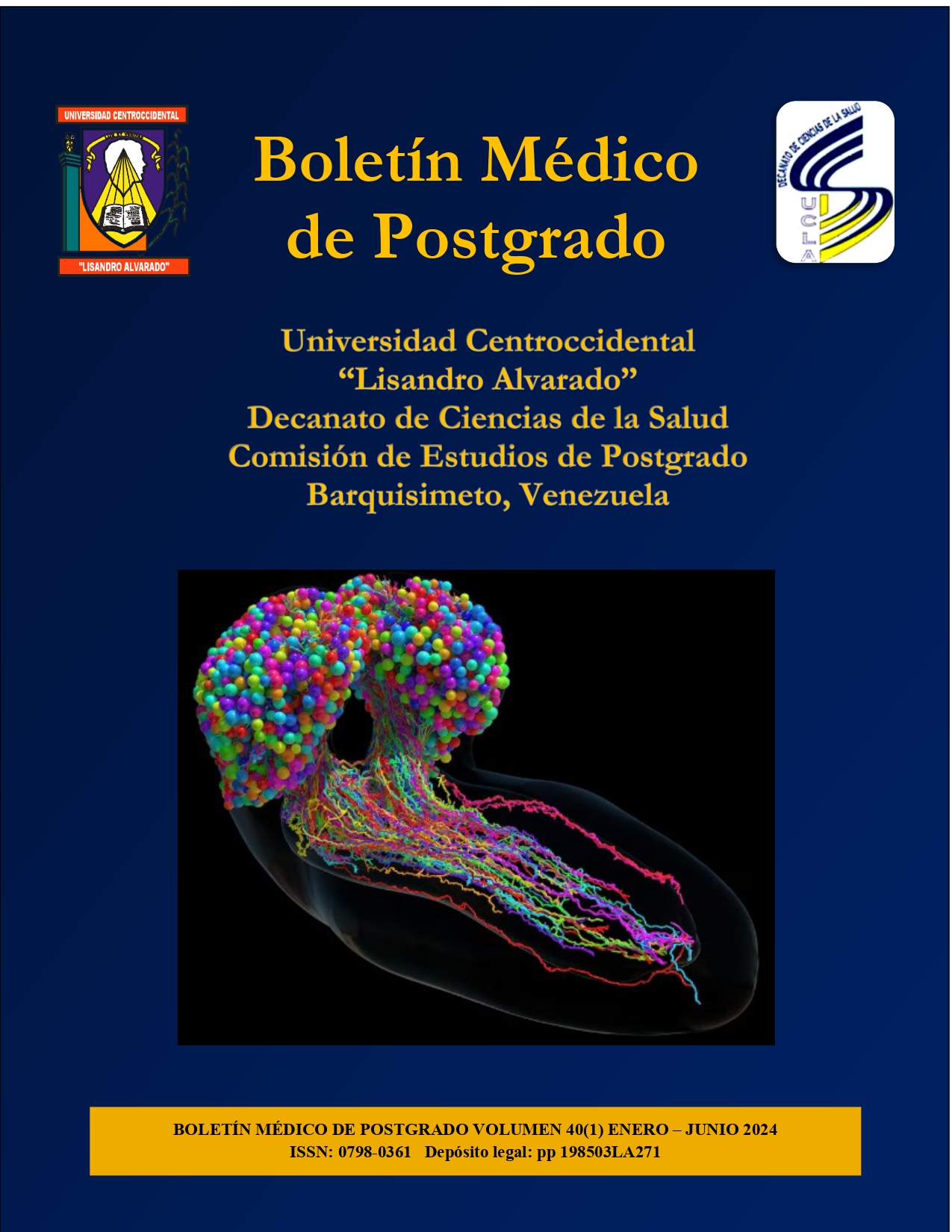Surgical approach to atypical localization of osteochondroma
Keywords:
neoplasm, bone tissue, osteochondrosis, knee, biopsy, orthopedic proceduresAbstract
Osteochondromas represent the most common primary bone tumors. So far, there have been no recent reports of osteochondroma in the Venezuelan population and even less of atypical localization. We present a clinical case of a 29-year-old female patient who consulted for progressive increase of volume in the posterior area of the left knee accompanied by pain and functional limitation for walking of 10 years of evolution. Plain radiography of the left knee and magnetic resonance imaging confirmed the presence of a space-occupying lesion in the popliteal region originating from the head of the fibula. The preoperative biopsy reported osteochondroma without malignancy. She underwent surgery with a wide posterior approach to the knee with an S-shaped incision with total exposure of the tumor and dissection of the popliteal artery, popliteal vein, tibial nerve and peroneal artery, with immobilization of the left lower limb using an inguino-malleolar splint. The patient had an uncomplicated postoperative period, with radiographic results 9 days after surgery showing total exeresis of the tumor and biopsy results of the surgical specimen of osteochondroma with no evidence of malignancy. The patient continues with satisfactory evolution and progressive reintegration to her work and social activities. The recommended treatment of choice for symptomatic atypical osteochondromas is surgical resection and follow-up due to the possibility of malignancy.
Downloads
References
Chen R, Dawen S, Vaes R, Di Bella C, Mayer R. Fractured osteochondroma presenting with popliteal pseudoaneurysm: Case report and review of literature. J Vasc Surg Cases and Innovative Techniques 2020; 6(1): 96-100.
Alabdullrahman L, Byerly D. (2022). Osteochondroma. En: StatPearls [Internet]. Treasure Island (FL): StatPearls Publishing; PMID: 31335016.
Barrio M, Hernández L, Vega N, Vaca P. (2021). Osteocondroma de localización atípica. Nuevo Hosp 2021; XVII(1): 34-37.
Suresh P, Srinivasa D, Manepalli S, Damera A, Killada J. (2020). Case Report Osteochondroma Involving the Ramus of the Mandible: An Unusual Location. Case Reports in Dentistry; Article ID 8603027.
Puertas J, Valcárcel A, Clavel N, Fernández J. (2017). Resección de osteocondroma de peroné distal postero-medial. Disponible en: https://www.revista-portalesmedicos.com/.../reseccion-osteocondroma-perone.
Caballero J, Romero B, Jiménez I, Medina J, Aniel M. (2021). Osteocondroma complicado peroné proximal. Sociedad Española de Traumatología. SECOT 58. Disponible en: https://congreso.secot2021.com/visor_posters_php.php?accio=d.
Cañete M, Fontoira E, Gutiérrez B, Mancheva, S. Osteocondroma: diagnóstico radiológico, complicaciones y variantes. Rev Chil Radiol 2013; 19(2): 73-81.
Tepelenis K, Papathanakos G, Kitsouli A, Troupis T, Barbouti A, Vlachos K, et al. Osteochondromas: An updated review of epidemiology, pathogenesis, clinical presentation, radiologic features, and treatment options. In vivo (Atenas, Grecia) 2021; 35(2): 681-691.
Thomas C, Sanderson B, Horvath D, Mouselli M, Hobbs J. An unusual case of solitary osteochondroma of the iliac wing. Caso Rep Orthop 2020; 2020: 8831806.
Segura D, Pino L, Mínguez M. Osteocondroma solitario de la escápula: localización poco habitual para un tumor frecuente. Arch Argent Pediatr 2021; 119(5): e562-e566.
Published
How to Cite
Issue
Section

This work is licensed under a Creative Commons Attribution-NonCommercial-ShareAlike 4.0 International License.
Las opiniones expresadas por los autores no necesariamente reflejan la postura del editor de la publicación ni de la UCLA. Se autoriza la reproducción total o parcial de los textos aquí publicados, siempre y cuando se cite la fuente completa y la dirección electrónica de esta revista. Los autores(as) tienen el derecho de utilizar sus artículos para cualquier propósito siempre y cuando se realice sin fines de lucro. Los autores(as) pueden publicar en internet o cualquier otro medio la versión final aprobada de su trabajo, luego que esta ha sido publicada en esta revista.



